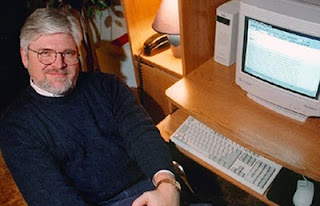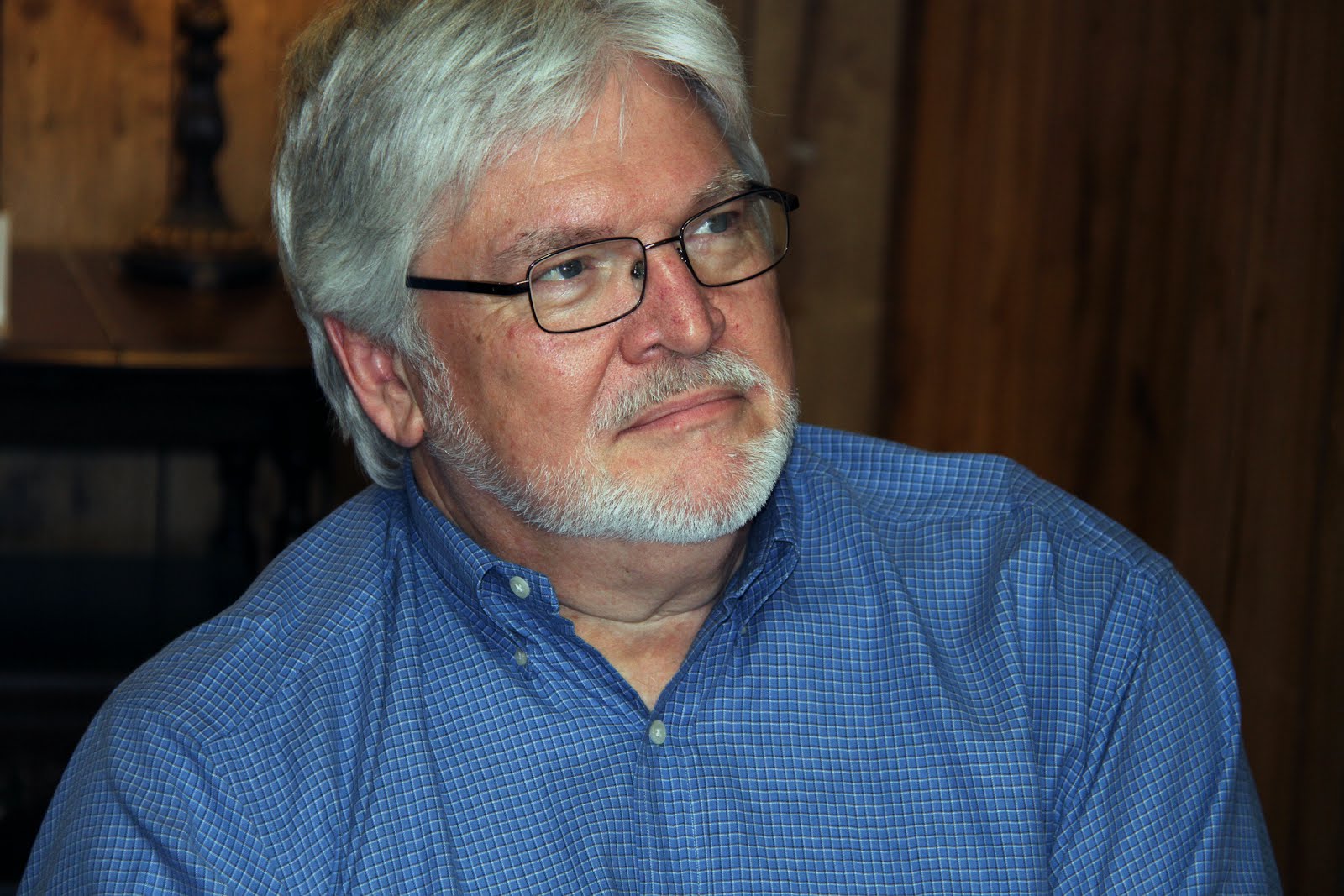(Off the technology-change topic for a bit this time, but I have to vent!)
There was
a story on PBS's "Frontline" this week that purported to show all the terrible things for-profit colleges are doing to veterans, ripping them off as they are returning from serving their country. Each time the reporter said the words "for-profit," it appeared he was using some kind of vile expletive. And the story implied that schools that seek profit for educating veterans...and anyone else...are not only not providing any value, but are brutally abusing those who risked their lives for our country, all in the name of greed and avarice and obscene profits.
(BIAS DISCLAIMER: I work in marketing, advertising and PR for a company that operates colleges...for a profit. I am in no way speaking in an official capacity or on behalf of my company in this article.)
Now, I can debunk the PBS story in so many ways it would make your head spin. Give me a camera crew and several months and I can find disgruntled students from any college or university you name...from the University of Phoenix to Harvard or Yale. For-profit schools are getting a growing portion of veterans' educational benefits because we are doing a much better job than traditional institutions in meeting the needs of those students. Unlike state universities and other traditional schools, we don't get a penny of money from the government. Students do, in the form of Title IV student aid or veterans' benefits. They vote with their feet and go to schools that offer the education they need when they need it. This story further implies that veterans don't have sense enough to investigate schools and potential careers without the Veterans Administration or some other government entity showing them the way. That borders on slander.
In the story, we see a vet decide he wants to get a bachelor's degree in animation and video game design, signs up for classes at a for-profit, and then learns what a tough job field that is to break into. Seems that before I committed thousands of dollars and four years of my life to preparing for a career, I would invest twenty minutes on the Internet to see if there were jobs available. Your government spends millions of your tax dollars doing career research, publishes books available at the library and on the Internet, and anyone can access the data. Google "Occupational Outlook Handbook." There are regulations in place that forbid schools from promising jobs, lying about career options, or confusing or misleading potential students. If anyone does that...and especially to men who have risked their lives on my behalf...they should be punished severely.
By the way, for-profit schools like ours are required to graduate a large percentage of people who enroll and to place them in their chosen career fields. If we don't, we lose our accreditation and are out of business. That's why you won't find academic programs in philosophy, basket-weaving...or journalism...at most for-profit career colleges. If we see job demand diminishing, we drop the program. If we see increased demand, we start the classes, as we have just done with our green energy tech school in Denver. Start them with a big investment, taking the risk to hopefully meet the demand of students and the companies that will employ them, all with the expectation of being able to make a profit. The point is that good for-profit schools have no incentive to enroll people who are not good prospects to complete the program and graduate. Then, if we send ill-prepared grads out to potential employers, you can bet they won't hire them. Or anyone else we send them in the future. We have to do what we do well or we don't make a profit. Or stay in business. Or invest in new schools and programs and hire people.
But the even bigger issue here is how "for-profit" has gradually come to mean "fat cats in their corporate jets and yachts, ripping off poor, unsuspecting people." I know it seems obscene when we hear how much so-and-so company pays its CEO, or what the profits are for a bank we taxpayers just bailed out a couple of years ago. But stop and take a breath for a moment. If the company is doing something well and making lots of money doing it, they will be incentivized to do other things well, invest, and hire. So what's wrong with the company making ridiculous profits? And shouldn't we praise them for dong so?
As I mentioned before, if someone is truly breaking a law or regulation...and there are plenty of those laws and regs on the books, I can tell you...then they should be punished. Fined. Thrown into the calaboose. Enforce the existing regs! But don't punish anyone for making an honest profit. Or even a really huge profit. And I know it galls me, too, to see profitable companies avoid paying taxes, but don't blame them if our tax system is chaotic and they take advantage of the mess. They only follow the laws as written, just as you and I do when we do our own taxes. Are you going to stop deducting your charitable contributions just because you are a wonderful citizen and don't want to use a lawful part of the tax code?
Let's say I have a little start-up company that takes some risks, I invest my 401K money and put some startup costs on my Visa card, and we develop and market a widget. We are taking a big risk, but that widget is better than anyone else's and becomes a runaway hit. My little company starts to make some serious profits. We hire more people, build some more widget factories. We even raise the price on our widget because we can, and people willingly pay it. And that gives us more capital to develop another great product and build more plants and hire more folks. But I also pay myself more, too. And build a beach house, buy a corporate jet, join a country club, and take vacations in Europe. Note that at no point have I burned any money, taken unlawful advantage of anyone, or stuffed cash under the mattress so nobody else can see it or use it. Every self-indulgent thing I have done with those profits...willingly paid by people who like and want my widget...has created more wealth for others: the people I hire, the people who build and maintain those new factories, the carpenters, electricians, and plumbers who built my beach house, the guys who designed, built and sold me the corporate jet, the people who drill and refine the oil that I burn in the plane, the hundred or so people who are employed by the country club, the airline, hotel, and other workers who so ably hosted me on those European vacations.
Now, if in the process of creating and marketing that widget, I bribed somebody, lied about the dangerous materials we used to build it, colluded with anyone to set the price, or did anything else illegal or unethical, then hit me. Hit me hard. Prosecute me. Fine me. Send me to the slammer.
But in every other way, government should be doing all it can to encourage me and others like me to create, innovate, invest, and build something. It should not be throwing up new and convoluted ways of preventing me from creating wealth...and tax revenue...in a legal way. Or demonizing me because I make a profit.
Listen to me: so long as I am doing it legally and ethically, THE BIGGER PROFIT MY COMPANY MAKES THE BETTER IT IS FOR EVERYBODY!
If I make an inferior or dangerous product, or if I charge too much for it, the marketplace will speak loudly and clearly and I will not only not be banking all the filthy lucre, I will be shuttering my plants and laying off people. Especially now, consumers are better informed than ever.
I'll give you one more example. I heard a story the other day on NPR (see a pattern here?) about the huge profits being made by for-profit correctional companies. These are companies that contract with governmental entities to operate jails and prisons, and apparently, because they are doing something traditionally done by government (another parallel with the for-profit educational companies), they are not supposed to make too much profit. Never mind that they are doing something the cities, states or federal government don't want to do, and that they are doing it more efficiently and are saving taxpayers millions and millions of dollars. Or that the entities hiring them are perfectly well pleased with them. They should not make too much money doing what they contracted to do or they are ripping us off.
If they are mistreating prisoners, feeding them gruel, sleeping a dozen to a cell or in any way violating the terms of their contracts, then go after them. But don't punish them...and don't denigrate them...for making a profit, no matter how much it is.
Profits are not a zero-sum deal. A company making a profit legally and ethically is not hurting or abusing anyone. Profits don't get sent on a rocket ship to the moon. They are used to buy and invest and inject a boost into every other sector of the economy. Tax profits fairly, evenly and consistently so companies can plan for it and you will see our economic woes disappear.
Remove the profit motive from our free-enterprise system and you kill it. But maybe that is the agenda some people have. All profit is evil. "For-profit" is obscene. Anyone who makes a profit is a money-grubber and must be taking advantage of someone else or breaking laws to do so. Let government dictate how much profit a person or a company can make. Protect us from the robber barons!
That's the answer.
Don Keith N4KC
http://www.donkeith.com/






























